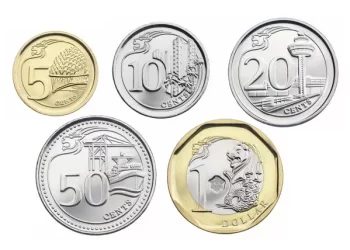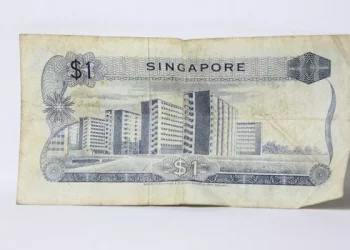Foreign exchange (forex or FX) trading is one of the most active and dynamic markets in the world, where currencies from various countries are exchanged. As forex traders, one of the most fundamental operations involves converting one currency to another. In this article, we will delve into the process of converting USD (United States Dollar) to INR (Indian Rupee) and explore the factors that influence the exchange rate between these two currencies. Whether you are a beginner or an experienced trader, understanding how to efficiently convert USD to INR and analyzing the underlying economic factors is crucial for making informed trading decisions.
Understanding the Foreign Exchange Market
Before diving into the specifics of converting USD to INR, it’s important to understand the foreign exchange market itself. The forex market is a decentralized global marketplace where all the world’s currencies are traded. With an average daily trading volume surpassing $6 trillion, the forex market is the largest and most liquid financial market in the world.
Unlike other markets such as the stock market, the forex market operates 24 hours a day, five days a week. Currencies are traded in pairs, and their value is determined by factors such as economic conditions, geopolitical events, interest rates, and supply and demand.
What is USD to INR?
When we refer to USD/INR, we are looking at the exchange rate between the US Dollar (USD) and the Indian Rupee (INR). This rate determines how much one US Dollar is worth in Indian Rupees. For instance, if the USD/INR exchange rate is 75, it means that 1 US Dollar is equivalent to 75 Indian Rupees. This exchange rate fluctuates throughout the day based on various market factors and economic conditions.
The exchange rate between USD and INR plays a crucial role in international trade, travel, and investment. It also affects the purchasing power of individuals and businesses. As a forex trader, understanding these fluctuations can help you make profitable trades by anticipating the direction in which the exchange rate is likely to move.
Why Convert USD to INR?
There are several reasons why individuals and businesses might need to convert USD to INR. Some of the most common reasons include:
Travel: If you’re planning a trip to India, you’ll need to convert your USD into INR to pay for goods and services.
Investment: Investors looking to invest in Indian companies or assets will need INR to buy stocks, bonds, or other investment products in India.
Business Transactions: Many businesses involved in international trade must convert USD into INR when dealing with Indian suppliers or customers.
Remittances: Many Indian expatriates living abroad send money back to their families in India, and the conversion from USD to INR is an essential part of this process.
The Current Exchange Rate of USD to INR
The exchange rate between USD and INR is highly dynamic, meaning it fluctuates constantly based on market conditions. Traders and businesses must keep an eye on real-time exchange rates to make timely and profitable transactions. Various sources provide these rates, including banks, forex brokers, and online currency converters.
For example, as of the latest data, the exchange rate for USD to INR might be hovering around 75. This means that if you convert $1,600, you would receive approximately ₹120,000. However, this rate is subject to change throughout the day due to factors such as market sentiment, economic data releases, and geopolitical events.
Key Factors Affecting the USD/INR Exchange Rate
To understand how and why the exchange rate fluctuates, it’s crucial to know the factors that influence currency pairs like USD/INR. Here are some of the key elements that determine the value of the US Dollar in relation to the Indian Rupee:
Interest Rates: Central banks like the US Federal Reserve and the Reserve Bank of India (RBI) influence the value of their respective currencies by setting interest rates. If the Federal Reserve increases interest rates, it often strengthens the US Dollar because higher rates attract foreign investment. Conversely, if the RBI lowers interest rates, the Indian Rupee may weaken as investors seek higher returns elsewhere.
Inflation Rates: Inflation is another critical factor in determining the value of a currency. A country with low inflation rates generally sees its currency appreciate over time, while countries with higher inflation rates tend to see their currencies depreciate. In the case of USD/INR, a rise in inflation in India could lead to a weaker INR against the USD.
Economic Data: Economic indicators such as GDP growth, unemployment rates, and industrial production provide insights into a country’s economic health. Strong economic performance in the US or India can lead to a stronger currency, while weak economic data can result in a depreciation.
Political Stability and Geopolitical Events: Political uncertainty, elections, or geopolitical tensions can have a significant impact on the exchange rate. For example, if India faces political instability, the INR may weaken, and USD may rise in value. Similarly, trade agreements or conflicts between countries can also affect the currency markets.
Market Sentiment and Speculation: Forex markets are often driven by investor sentiment and speculation. If traders believe that the US economy will outperform India’s economy in the near future, they may buy USD, leading to a stronger US Dollar against the Indian Rupee.
Trade Balances: The balance of trade between the US and India also influences the exchange rate. If India exports more goods and services to the US than it imports, it will result in higher demand for INR, which can strengthen the currency. Conversely, if the US has a trade surplus with India, the demand for INR might decrease, leading to a depreciation of the Indian Rupee.
How to Convert USD to INR: Methods and Tools
There are several methods you can use to convert USD into INR, depending on whether you’re a trader, a traveler, or an investor. The most common methods include:
Currency Exchange Services: Banks and currency exchange services offer the option to convert USD to INR. While this method is straightforward, the exchange rates at these establishments are often less favorable due to added fees and service charges.
Online Currency Converters: Many websites and mobile applications provide real-time exchange rates and allow you to convert currencies. These platforms usually give you a rough estimate of the exchange rate, but they may not reflect the actual rates you’ll receive at the time of conversion.
Forex Brokers: Forex brokers offer online platforms for trading currencies and provide the most accurate exchange rates available in the market. If you are a forex trader, you can convert USD to INR using the live rates on these platforms, which may offer better prices than traditional banks or exchange services.
ATMs and International Cards: If you’re traveling to India, withdrawing INR directly from an ATM using your US bank card or using an international credit/debit card is another convenient way to convert USD to INR. However, this method may come with additional fees, including foreign transaction fees and ATM withdrawal charges.
Steps to Convert 1600 USD to INR
Converting $1,600 to Indian Rupees involves a simple calculation based on the current exchange rate. Here’s how you can go about it:
Check the Current Exchange Rate: First, check the current USD to INR exchange rate from a reliable source. For this example, let’s assume the exchange rate is 75.
Multiply USD by Exchange Rate: Multiply the amount in USD by the exchange rate. In this case, the calculation would be:
1600 USD×75 INR/USD=120,000 INR
Consider Additional Fees: Depending on where you convert your money, you may incur fees. Banks or currency exchange services often charge a small percentage of the transaction amount as a commission or service fee. Forex brokers might offer more competitive rates, but there may still be fees involved.
Complete the Transaction: Once you know how much you’ll receive, proceed with the transaction, whether through a bank, online service, or forex broker. If you’re trading, ensure that the timing aligns with favorable market conditions to optimize the value of your conversion.
Understanding Currency Fluctuations and Timing
As mentioned earlier, exchange rates fluctuate due to various factors, so the timing of your conversion matters. Forex traders often monitor charts and technical indicators to time their conversions to maximize profit. If you’re converting USD to INR as part of a forex trading strategy, understanding chart patterns, economic events, and sentiment can help you predict the direction in which the exchange rate will move.
One approach is to use technical analysis, which involves studying historical price data to identify patterns and trends. Traders also use fundamental analysis to evaluate economic factors such as interest rates, inflation, and GDP data to anticipate currency movements.
Conclusion
Converting 1,600 USD to Indian Rupees is a straightforward process, but the key to making the most out of this conversion lies in understanding the factors that influence the exchange rate. By being aware of economic indicators, interest rates, and geopolitical events, you can make better-informed decisions whether you are traveling, investing, or trading. As a forex trader, keeping a close eye on real-time exchange rates and using the right tools and platforms will enable you to execute your transactions effectively and efficiently.
Understanding how to convert USD to INR is an essential skill for navigating the forex market. With the right knowledge and tools, you can make the most of your currency conversions and stay ahead in the ever-changing world of foreign exchange trading.
Related Topics:




























